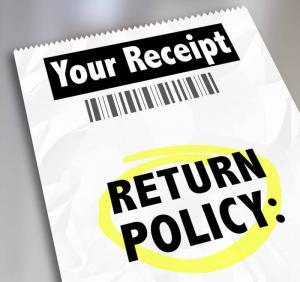 How a small business handles customer complaints and store returns defines its customer service.
How a small business handles customer complaints and store returns defines its customer service.
How you handle store returns shows whether or not that company understands that customer service is not just about making a sale, but it is also about customer relationship. Even if your customer is filing a complaint or returning a product, you can make every experience with your company a positive experience.
To make the store return a positive customer experience, you need to be sure both your return policy and your return process match your customer service goals.
These tips for handling returns will ensure you’re providing great customer service:
- Have a return policy in place. Make sure that it gives your customers what they want. In most cases customers simply want to be able to return something they have bought without a huge hassle. If you make it easy for them to return something they do not want, they will be more likely to buy from you in the future.
- You don’t have to have a full refund return policy for all products. Having exceptions is fine, as long as your exceptions are published and fairly applied. It’s common for sale merchandise to be sold under a ‘no return’ policy. It is also common to have no refunds after a certain length of time.
- Your return policy needs to be visibly posted. In a bricks-and-mortar store, post it on your wall, your front counter and on your cash register, and have it printed out on customer’’ receipts if possible. On a website, spell it out on a page and make sure that links to that page are visible in your site navigation.
- Train your sales staff to get in the habit of referring to the return policy when finalizing a sale. It’s easy for a sales person to say something such as, “And if you have any problems with this item in the next 90 days, you can return it for a full refund as long as you bring in the receipt.” Or, for items on sale that are exceptions to your return policy: “And you know that these sale items can’t be returned?” One proactive sentence can significantly cut down on the number of store returns you have to deal with.
- Allow all staff to handle returns. There’s nothing more frustrating to customers than to go to a store to return an item and be told by a staff member that only a certain person can do that, especially when that person is out on break or off on a buying trip and won’t be back until next Tuesday! Empower all your staff to handle returns and solve customers’ problems. Of course, if all your employees are going to be handling returns, they need to know how. Training them will be easy if you have a clear, written-out return policy. Then it’s just a matter of going over it with staff and showing them how to do the return process.
Store returns are a fact of retail life. No matter what you sell, people will want to return things. Make the return process straightforward and simple. Turn it into a pleasant transaction rather than an unpleasant chore and you will not only keep customers but encourage them to spread positive word-of-mouth about your business.
